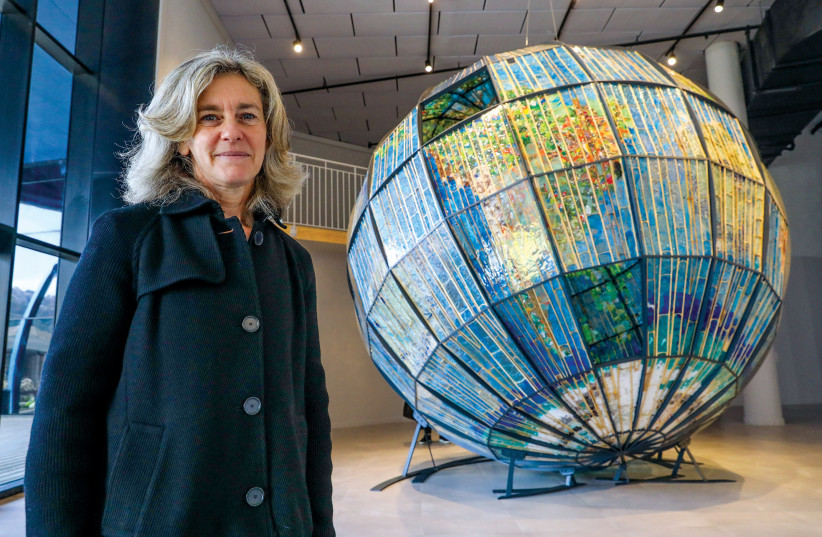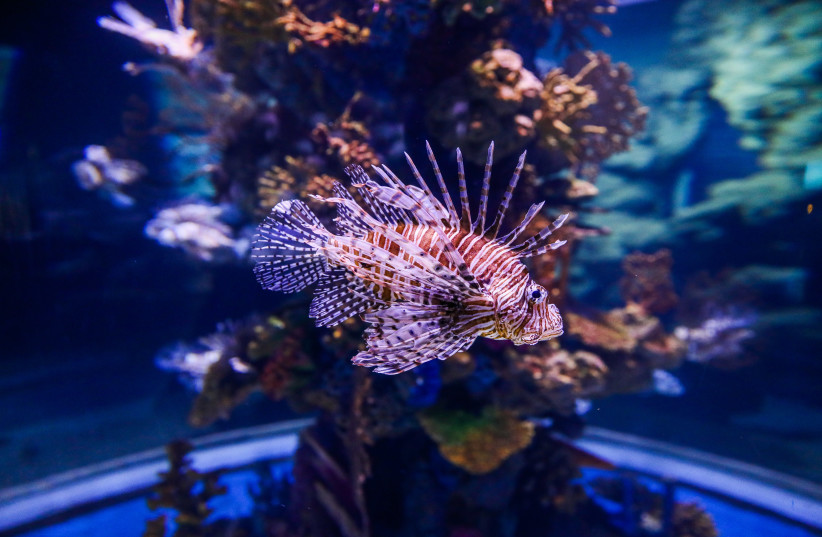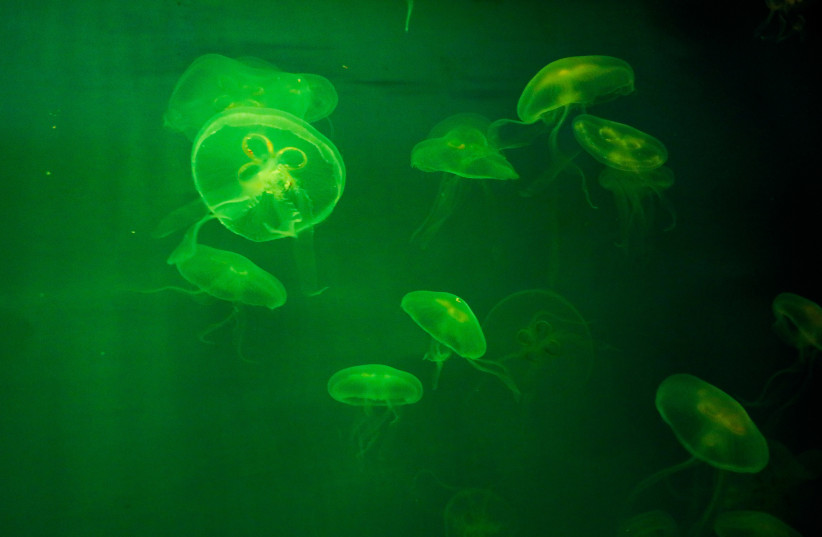I’ve been vegetarian on and off for almost two decades, and vegan for the last five years. In that time, I’ve heard every imaginable response when the subject is raised. But the one that always gets me is “But you eat fish, right?”
Over the years, I have noticed that people do seem more open to the idea of going meat-free but this transition also usually follows a particular sequence. It’s no secret at this point that the production of beef is one of the greatest contributing factors in climate change; it also seems that people relate more easily to animals like cows and pigs. I’ve met people who abstain from the consumption of mammal meat as a rule, one of whom followed up by referring to her “no-nipple diet.”
The next category people tend to eliminate is usually chicken and other poultry. A bit less cuddly and with a lower carbon footprint, but still recognizable as something worthy of abstention.
When it comes to fish, though, there’s a bit of a disconnect. After all, there is something rather alien about creatures of the sea. There are even different rules for how to consume fish versus other animals within most major religions; perhaps this “othering” influences the thought processes of the secular as well. Religious or not, it’s hard to feel the same sympathy for a tuna as it is for a baby cow. But there are reasons beyond animal welfare for reconsidering our seafood consumption. And if we don’t acknowledge them now, a day may come when we will have no choice.
It’s an uncomfortable conversation – I’ve had it many times but it’s just not possible to discuss the problem of ocean plastics without bringing up the elephant seal in the room. My preferred mode of activism is by quiet example: to prepare delicious plant-based meals and share them with those around me. Israeli artist Beverly Barkat prefers to speak through art.

Making art out of waste
She tells the story of what’s happening to our oceans through her newest piece, Earth Poetica, currently on display at the The Gottesman Family Israel Aquarium in Jerusalem. After being commissioned to create what will eventually become a permanent installation at the World Trade Center, she felt that whatever she produced needed to have a powerful message.
Barkat – wife of former Jerusalem mayor and MK Nir – creates what she refers to as “site-specific” works, pieces influenced by the venues where they will be displayed. She explained during Earth Poetica’s debut at the aquarium that visiting the World Trade Center reminded her of a documentary she had once seen that featured children collecting plastic pieces from a beach [instead of seashells], images that led her to ask herself, “Is this what we’re leaving our children? Is this what I’m leaving my children?”
From there, the subject of her artwork was clarified. She understood that the project needed to be about plastic waste, and that “It needs to be big enough because this problem is an epic problem. It needs to be large enough that people respect it in a way of being grand,” later adding “It was important for me [that] when people walk in to realize – this is planet Earth.”
Three years, countless hours in the studio and a pile of plastic collected from all over the world later, Earth Poetica has begun to share this message. It’s an enormous, glistening jewel-like piece of art from the outside, colorful and vibrant in a way that one can’t help but be drawn in. This was Barkat’s intention – that as the viewer gets closer and takes a look inside, the true subject of the piece becomes evident: “This is about garbage and I [the viewer] did this. I used that plastic, I threw that plastic away, and that plastic is causing great damage to our world.”
She continued to explain that she wanted viewers to feel something as a result of having interacted with the art, something that would make us think twice about climate and ask ourselves if we really need to use that plastic bag in the future.
What’s the science?
So, how does all of this relate to eating less fish? According to a peer-reviewed study published in the London-based journal Nature, at least 46% of the Great Pacific garbage patch (GPGP) between California and Hawaii is made up of discarded commercial fishing nets.

The GPGP is one of five major patches in oceans around the globe that Barkat included in the creation of Earth Poetica by using real recycled fishing nets. We can give up straws and switch to bar shampoo, but an undeniably large part of the problem results from humans eating too much fish.
That’s not to say that giving up seafood is enough, though. We can and should be reducing plastic use whenever possible. The MacArthur Foundation estimates that the ocean will contain about 10 million tons of plastic within the next 30 years – an amount that one day will surpass the total amount of fish. These plastics cause billions of dollars in ecological damage every year. Microplastics, or plastic pieces measuring less than 5 mm., have been discovered everywhere, from within fish that inhabit these waters to within human placentae, as cited in the National Center for Biotechnology Information at the US National Institute of Health.
<br>Search database
Besides fishing nets, from where does all this plastic come? Well, us. The Environmental Protection Ministry estimates that each person in Israel alone creates about 1.7 kg. of trash per day, about 620 kg. a year. Americans create even more – the US Environmental Protection Agency estimates that the average trash produced per person daily comes in at around 2.2 kg. Disposable plates and cutlery, cigarette butts, and plastic-bottled beverages are major contributors.

Change starts with us
So, what is the solution? Education seems like a great place to start, and the Israel Aquarium is doing very well in that department. Every week, groups from around the country come to visit and learn about Israel’s aquatic habitats through tours and educational programs, some of which are now being developed based on Barkat’s project.
The walls of the room currently housing Earth Poetica are lined with information about the harmful use of plastic on both humans and marine life and this is where the aquarium’s conservation efforts come in. Screens display videos of plastic fishing nets being removed from the mouths and flippers of sea turtles, a few of whom now live in the aquarium. Sometimes, their flippers need to be removed after getting caught in plastic and it would be too dangerous to return them to the sea.
This emphasis on education continued even during the COVID-19 pandemic quite successfully. The aquarium received about 300,000 visitors in 2021, the same number it sees in a normal year – despite being closed for three months. While tour guides were put on leave during that period, everyone is now back at work. Alon Levy, the aquarium’s director, says they actually need to increase staff.
He explains how their efforts connect to Earth Poetica’s message, and that he sees its educational influence on aquarium visitors, “The goal of the aquarium is to teach about the beach, fish – all of the good things we have from the sea. [We teach about] the species at risk and the connection to the plastics problem.” He continues, “I think that everyone that comes to the aquarium leaves a little bit different. Even if it’s small things. We believe that education needs to come from a positive experience. And we see that it’s happening, the kids sit and listen.”
<br>At the aquarium
From what I could see during my recent trip, Levy is right. Multiple groups of school children were on guided tours showcasing the marine life in the four sections about the main bodies of water in Israel – the Mediterranean Sea, Sea of Galilee, Red Sea and the Dead Sea. Despite its English name, there actually is a toothcarp that calls the salt lake home, something I learned on my visit. The children’s excitement as they followed the visitor’s path and saw the stingrays and sea turtles was audible from across the room.
Levy explained that there’s much more to come. The aquarium is fairly new, having just been completed in 2017. The display of Barkat’s piece is one of several projects planned for the next few years, which will also include an exhibit on jellyfish reproduction – I’m told this is a very unique process – later this year. You can be sure I’ll be back to check out this one.
To see Earth Poetica and all of the other wonders of the aquarium, tickets can be purchased in advance at: www.israel-aquarium.org.il/tickets.

A drop in the ocean
As with the educational efforts of the aquarium, Barkat explained that her objective is to expose as many people as possible to the problem through her art to try and create a solution. “This is Earth telling the story about ‘If we don’t change the way we behave, this is where we’re going to end up. This will be the future,’” she continues, “We have a chance to change. We need to invest our energy in leadership, and use alternative approaches to enable our decision-making. It can’t be the way we made decisions before. Different people need to come together to think of the solution.”
It’s easy to look at a problem of such magnitude and feel helpless. How can one person even begin to make a dent? But the message of Earth Poetica and of the aquarium itself is that every person’s contribution matters. Every plastic bag we forgo, every meat-free meal we eat is one less harmful act toward the whole. What is the massive ocean if not a collection of individual drops of water?
